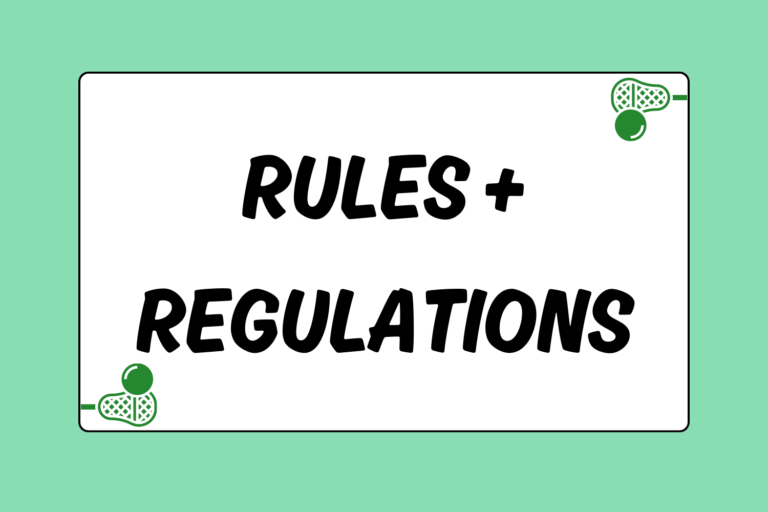The new season is upon you. The smell of freshly cut grass lingers in the air. Players lace up new cleats and start to break in new pockets. Tryouts are here, and you’re going to have some tough decisions to make about whom to take for your squad, and how to best shape your team to make a championship run late in the season. This guide looks at ways to evaluate players fairly and accurately, having a hand in everything going on at tryouts, and how to give players bad news they don’t want to hear. Get your whistle and your clipboard and let’s get the tryouts started!
Skill Evaluations
Properly evaluating players is a very important part of tryouts. You only have a week or so to run drills and see who’s improved from last season, so you’ll need to be sure to employ a variety of drills and games to get a proper view of everyone’s skill levels in all the important areas.
A good place to start is actually at home on your computer, a few days before tryouts begin. Make a spreadsheet with the names of all the players from your program in the first column. Then have a defined set of skills you are looking for entered into each row going from left to right. Grade each player’s ability in your chosen skills on a 1-5 scale. Have all of your assistant coaches grade each player to get a clearer view of how all the coaches evaluated each prospective player. A few quick ideas for skills to grade for each position can be found below.
Attack:
Stick handling, Dodging, Passing, Shooting, Speed
Midfield:
Defense, Shooting, Passing, Speed, Stick handling
Defense:
Stick checks, Stick handling, Physicality, Clearing, Ground balls
Don’t limit your categories to the ones listed above. If you have other things you’re looking for, then by all means include them in your spreadsheet. Be careful not to include so many categories that you spend all your time filling out the sheet instead of watching the players play.
Bird’s Eye View
Trust your assistants and fellow coaches to be able to run drills and evaluate players. As the head coach, you’ll want to get a good idea of the relative skill level of every player at tryouts. This means you have to intermingle with all position groups and coaches to maximize your exposure to all the players. Divide your time equally between all position groups, and do your best to warm up the goalies whenever possible.
Especially as the head coach, you need to have a good idea of what your individual players are capable of. You should also have a grand view of your program, both where it is currently and where you want it to be a few years down the line. Keep in mind which players will be graduating at the end of the year, and what positions need to be paid special attention to. If you are losing three senior defensemen at the end of the year, maybe it is a good idea to take the sophomore on the varsity team and get him some experience for a year against better competition.
Shaping Your Team
It’s the last day of tryouts. You have some important decisions to make as far as which players make the team. You must be sure you have all the necessary components to compete for a championship. Even if it means taking some more inexperienced players and sacrificing a little size or speed, make absolutely certain you have every type of player you will need to compete game in and game out.
At the attack position you will need:
• A good dodger/feeder.
• A good finisher who can play on the crease.
At the midfield position you will need:
• One faceoff specialist, and another player who can win at least 50 percent.
• Minimum of two players who are committed to playing lights-out defense.
• One outside shooter.
• Two dodgers capable of drawing a slide.
At defense you will need:
• A nasty and physical player capable of being a big hitter.
• One player who can push the ball up the field in transition.
• A smart, stay-at-home guy who always knows where everyone else is on the field.
Try to see the big picture all the time. It is okay to send a talented sophomore to the JV team and let him get game experience while the average but heady junior plays varsity and fills a need for the team. Try not to take guys who are just filling space on the roster and won’t get many chances to play anyway.
Cutting Players
Breaking bad news to players is never easy, but as a coach you must do this confidently and with conviction. In some instances you will be telling a player he’s going to be spending the year on the JV team, but in other instances you will be cutting a player from the program entirely. High school students can be emotionally fragile, so be careful with your choice of words when dealing with these players. Absolutely do NOT break the news to individual players in front of their peers. Do it in private, where you and/or the other coaches can talk to the player one-on-one.
For the players going to the JV team, emphasize what you and the rest of the coaches will be looking for them to accomplish during the season, as well as how they can develop individually and as leaders while on junior varsity. Explain to these players why you felt they weren’t good enough to make the varsity team, but use this as a chance for constructive criticism. Instead of telling a player that his shooting is terrible, tell him that you feel he could use some work on his shooting.
Occasionally a player may directly ask you why a certain player made the varsity team instead of him. This is a great time to bust out the skills spreadsheet. Show the player the areas they lacked in, and the areas that the other player bested him in. If a player is confident enough to ask you why someone else made it over him, then he should be emotionally stable enough to take to heart your evaluations and look to improve his game. These types of players are usually the ones who put in the most work during the season, and try the hardest to improve.
Now comes the part about cutting players from the program. Before you cut someone, you need to be absolutely sure you’re making the right decision. Does the player seem like he really wants to be a part of your program, or does he seem like he’s only there for the P.E. credits? Is this player a gifted athlete with little or no lacrosse training? Recognize who the fringe players are that you could develop within your program before you go cutting someone who has played eight other sports competitively.
Always be gentile when cutting a player. Even if he gets testy or confrontational, you never should lose control of the situation by scolding him or telling him directly that he has no value to your team. Explain to the player what he can do to come back next year ready to make the team. Be sure to tell the player that this is not an easy conversation for you to have, and that you don’t enjoy having to cut someone. If you can make them understand how hard it is for you to handle the situation, they should be able to better handle the emotional letdown.
Playing JV with pride
Michael Jordan didn’t even make his high school’s varsity basketball team as a sophomore. Some players simply take longer to develop or grow into their bodies than others. Make sure all your players understand that it isn’t a death blow to a talented young player to not make varsity as an underclassman. The benefits of playing JV are many, including increased playing time, and more chances to develop into a team leader.
Completing the Process
Be as fair as possible in your evaluation and selection process. Always be honest and upfront with the kids, and they will gain a better respect for you through it all. Sometimes it’s better to make a roster decision with the long-term picture in mind instead of the short-term outlook. Remember, you’re building a program, not just a team for one year.





